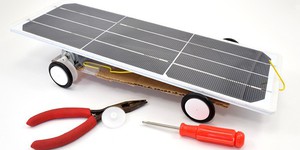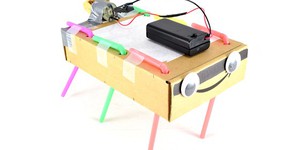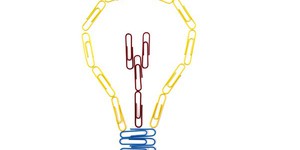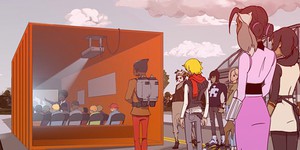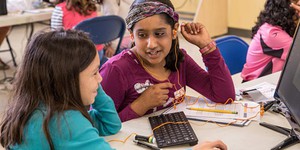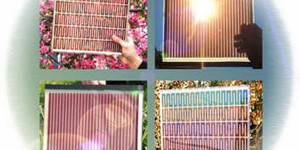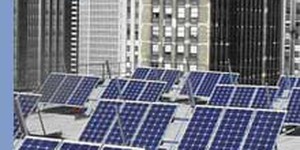Energy & Power Lesson Plans (6 results)
Whether you are working, studying, or being entertained, much of our daily routines rely on being plugged-in. You probably don't spend a lot of time thinking about where all that power comes from, but someone has to! Figuring out the best ways to produce energy is a big job that is growing along with the world's population. Energy production is a complex topic with debates about whether to invest in fossil fuels or clean renewable energies like solar, wind, water, and geothermal. Take a first-hand look at some of the problems and challenges scientists and engineers are tackling as they look at making and storing energy.
|
Select a resource
Sort by
|
Lesson Plan
Grade: 5th-8th
Help your students learn about solar energy, physical forces, and other science topics with this hands-on engineering experience. This lesson plan will show you how to get your classroom started building solar-powered cars that your students can enter, if desired, in regional Junior Solar Sprint competitions. No previous experience with electronics or building things is necessary.
Get the dates and location for your
regional competition.
Read more
NGSS Performance Expectations:
Featured
Lesson Plan
Grade: 6th-8th
7 reviews
Junkbots are easy-to-build robots that you can make using a simple circuit and some recyclable materials. In this lesson, your students will learn about engineering design as they compete to build the fastest robot. No previous robotics experience is required!
Read more
NGSS Performance Expectations:
Lesson Plan
Grade: 3rd-8th
4 reviews
Coming up with new ideas is hard! How do engineers design new things or improve existing ones? Engineers and inventors use different brainstorming techniques to help them think outside the box and come up with new ideas. In this lesson plan, your students will practice brainstorming with a method called SCAMPER.
Read more
New
Lesson Plan
Grade: 6th-12th
Create a two-part system for filtering greywater. Teams will focus on communication and systems engineering as they build separate components to filter solid and liquid waste and then combine them into one device.
Learning Objectives
Students will:
Consider the potential effects of drought and how greywater could be part of the solution.
Design a system for filtering out solid waste or liquid waste.
Consider effective communication strategies with their team.
Collaborate on their design…
Read more
Lesson Plan
Grade: 4th-8th
Would it be possible to power everything in your classroom using clean, renewable solar power? Inspired by
Global Problem Solvers: The Series,
in this lesson plan, your students will research and design a solar power system for a mobile classroom that can be used after natural disasters or in remote areas without permanent schools.
This lesson is one of three independent lesson plans inspired by Global Problem Solvers: The Series. You can read more about the series and the lesson plans…
Read more
NGSS Performance Expectations:
Lesson Plan
Grade: 4th-8th
How can technology and the internet help us solve some of the world's most pressing problems? Your students might not be ready to tackle global poverty or world peace, but they can start small by identifying a social problem in their local community. In this lesson plan they will design a solution to a problem of their choice that uses technology. It could be anything from a GPS-enabled dog collar to track lost pets, to an app that notifies local food banks when people have extra fruits and…
Read more
NGSS Performance Expectations:
Lesson Plan
Grade: 9th-12th
How does a solar cell work? In this green chemistry lesson plan, students will build and test their own dye-sensitized solar cells using dye from blackberries. Along the way, they will learn about the principles of green chemistry and evaluate how solar cell manufacturing can go green.
Read more
NGSS Performance Expectations:
Lesson Plan
Grade: 3rd-5th
In this activity, students learn how engineers use solar energy to heat buildings by investigating the thermal storage properties of some common materials: sand, salt, water and shredded paper. Students then evaluate the usefulness of each material as a thermal storage material to be used as the thermal mass in a passive solar building.Engineering Connection
Engineers design technologies that can turn sunlight into electricity to power households and businesses. For…
Read more
NGSS Performance Expectations:
|
Explore Our Science Videos
Build an Infinity Mirror | Science Project
Dancing Robot
Science Buddies: Pilobolus Spore Sac Launch

